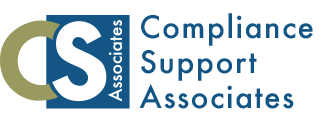FAQS
The Americans with Disabilities Act (ADA) is a federal civil rights act enacted in 1990 prohibiting discrimination against people with disabilities.
There are five sections, or “titles,” which cover different aspects of discrimination:
- Title 1, Employment
- Title II, State and Local Government
- Title III, Public Accommodations and Commercial Facilities
- Title IV Telecommunications
- Title V, which covers miscellaneous sections that deal with constructions
There are two main reasons to comply:
- Legal
First and foremost it’s the law…
Title III of the Americans with Disabilities Act of 1990 (42 U.S.C. 12181) prohibits discrimination on the basis of disability by public accommodations and requires places of public accommodation and commercial facilities to be designed, constructed and altered in compliance with the accessibility standards established by this part.
- Moral
We as Americans have a duty to follow the laws of this country and should do everything in our power help all of our citizens live their life free from discrimination and bias and enjoy the freedom which this country provides.
It’s not if your business will be sued for A.D.A compliance violations, it’s when your business will be sued for A.D.A compliance violations.
If you are sued and are in violation, you have no defense. Many persons with disabilities feel discriminated by businesses where they cannot enter, properly use the facilities, or are made to feel like an outcast due to their disability. Many of the people who sue businesses for A.D.A violations are honest and just want the business they patronize or would like to patronize to adhere to the law and make the proper modifications.
Unfortunately, there are other less ethical people whose litigious motivations behind their A.D.A. violations suits are monetarily motivated. Either way, the defendant will still have to incur attorney’s fees, court costs, possible fines and other legal fees to defend the suit.
At the end, most businesses end up paying around $15,000 to lawyers on both sides, $5,000 in court costs and still must hire a contractor to do the A.D.A modifications, all the while hoping the federal government or the state won’t issue a fine.
There is a basic process for complying with ADA:
- Learning about the requirements of ADA and how they apply to a facility or program;
- Conducting a survey to identify barriers and violations
- Establishing a list of potential modifications for barrier removal, including changes to policies, facilities, and cost estimates;
- Removing existing barriers.
Title III distinguishes between privately-owned businesses that invite the public in to purchase goods and services (public accommodations) and those that don’t (commercial facilities). Public accommodations are required to remove barriers in existing facilities where it is readily achievable to do so.
Title III regulations list twelve categories of public accommodations:
- Places of lodging (an inn, hotel, motel, or other place of lodging)
- Establishment serving or drink (a restaurant, bar, or other establishment serving food or drink)
- Places of exhibition or entertainment (a motion picture house, theater, concert hall stadium, or other place of entertainment or exhibition)
- Places of public gathering (an auditorium, convention center, lecture hall, or other place of public gathering)
- Sales or rental establishments (a bakery, grocery store, clothing store, hardware store, shopping center or mall, or other sales or rental establishments)
- Service establishments (a laundromat, dry cleaner, bank, barber shop, beauty salon, travel service, shoe repair service, funeral parlor, gas station, office of an accountant or lawyer, pharmacy, insurance office, professional office of a heath care provider, hospital or other service establishment)
- Stations used for public transportations (a terminal, depot, or other station used for specified public transportation
- Places for public display or collection (a museum, library, gallery, or other place of public display or collection)
- Places of recreation (a park, zoo, amusement park, or other place of recreation)
- Places of education (a nursery, elementary, secondary, undergraduate, or post graduate private school or other place of education)
- Social service establishments (a day care center, senior citizen center, homeless shelter, food bank, adoption agency, or other social service center establishment)
- Places of exercise and recreation (a gym, health spa, bowling alley, golf course, or other place of exercise or recreation)
All such establishments have to comply with the requirements for public accommodations; only private clubs and religious establishments are exempt (but any public accommodations leasing spaces from them have to comply).
You can get IRS tax credits and deductions for making ADA access improvements. If your business had less than $1,000,000 in revenues last year OR 30 or fewer full-time employees, a tax credit of up to $5,000 is available. A tax deduction of $15,000 per year is also available for some qualifying businesses.
The Community of persons with disabilities represents a large segment of the population.
- 54 million Americans have disabilities
- 35 million Americans over 65 years old
- 77 million Baby Boomers 27 million Americans report some difficulty walking
- 2.2 million Americans use wheelchairs. With scooters added, the number of people not in institutional settings is about 3 million.
- 54 million Americans with disabilities have an aggregate income of $1 trillion, with disposable income of $220 billion (that’s more than the coveted teen market of $170 billion).
